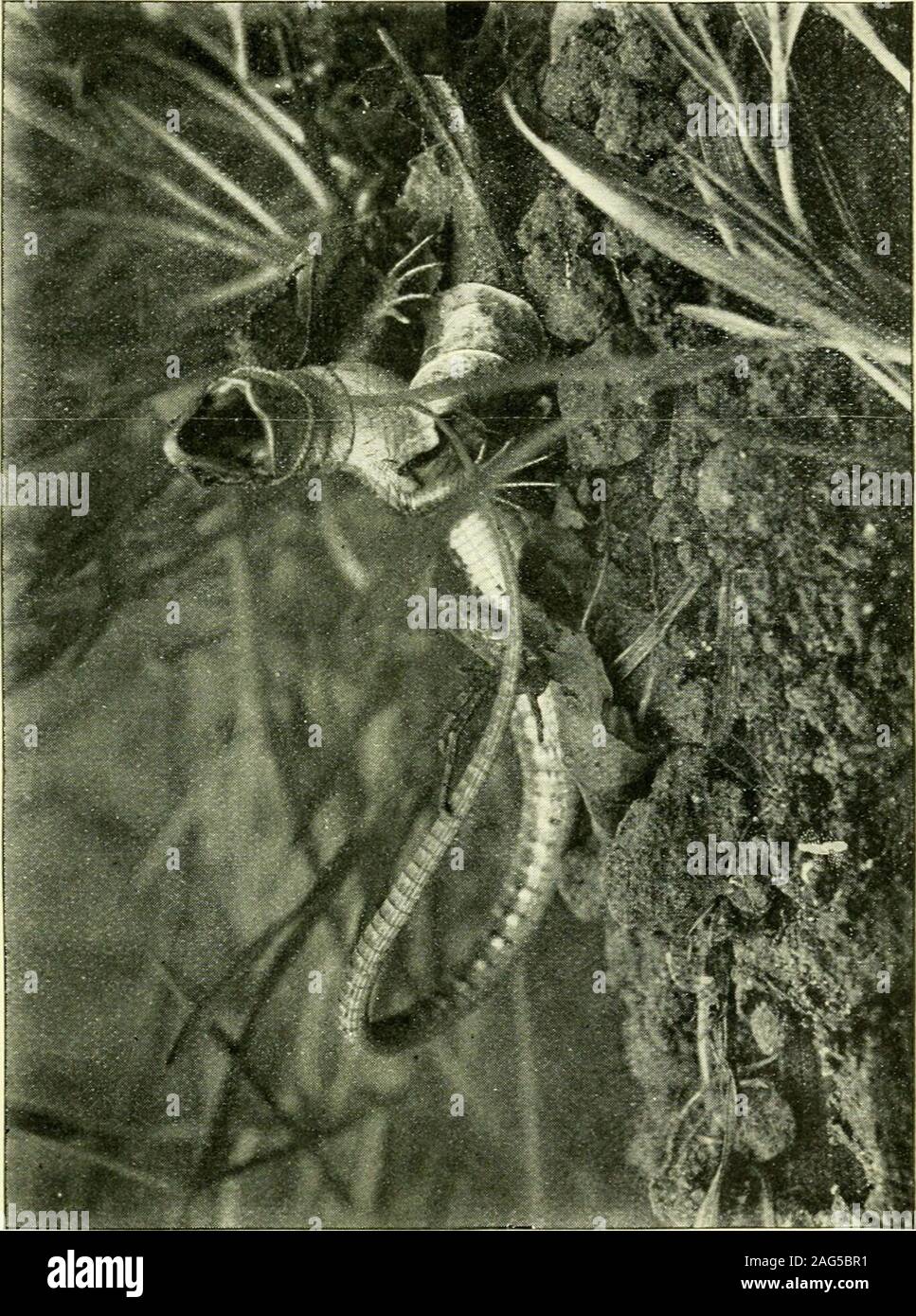. The life-history of British lizards and their local distribution in the British Isles. carefully,and often makes for the thread. The boys in SouthernItaly have improved upon and simplified this mode ofcatching lizards by bending the end of a wisp of grass 80 BRITISH LIZARDS into a noose, and covering the latter over with a thinfilm of saliva. The shiny film, like a soap-bubble, issure to excite the curiosity of the creature. The lateProfessor Eimer refers to this practice as carried outby the children of two thousand years ago, and hesagaciously explains that the beautiful statue of theso-ca

Image details
Contributor:
The Reading Room / Alamy Stock PhotoImage ID:
2AG5BR1File size:
7.1 MB (648 KB Compressed download)Releases:
Model - no | Property - noDo I need a release?Dimensions:
1364 x 1832 px | 23.1 x 31 cm | 9.1 x 12.2 inches | 150dpiMore information:
This image is a public domain image, which means either that copyright has expired in the image or the copyright holder has waived their copyright. Alamy charges you a fee for access to the high resolution copy of the image.
This image could have imperfections as it’s either historical or reportage.
. The life-history of British lizards and their local distribution in the British Isles. carefully, and often makes for the thread. The boys in SouthernItaly have improved upon and simplified this mode ofcatching lizards by bending the end of a wisp of grass 80 BRITISH LIZARDS into a noose, and covering the latter over with a thinfilm of saliva. The shiny film, like a soap-bubble, issure to excite the curiosity of the creature. The lateProfessor Eimer refers to this practice as carried outby the children of two thousand years ago, and hesagaciously explains that the beautiful statue of theso-called Apollo Sauroctonos represents a boy who isin the act of noosing the little lizard on the tree. ^ Field naturaHsts who wish to pursue their studyof lizards beyond the limited lizard fauna of GreatBritain, cannot do better than read Dr. Gadows book, from which we have quoted the above passages. The general appearance and attitudes of L. muralismay be best appreciated from the illustrations, whichare from photographs of living specimens. ^ Gadow, Amphibia and Rc2itilcs, pp. 551-553.. 0 -^0 si ^ 5> i-. CHAPTER X THE SPECIFIC CHARACTERS OF BRITISH LIZARDS TEEMINOLOGY OF HEAD SCALES—SPECIFIC SCALING OF THE THEEE SPECIES CLASSIFICATION OF BRITISH SPECIES. The average field naturalist is not as a rule very-interested in questions of minute structure and detailsof classification, unless he be a botanist or an entomo-logist. He is generally satisfied with being ableto distinguish an adder from a ring-snake withouttroubling to learn the particular scaling arrangementswhich are characteristic of the species. And thisstate of knowledge or ignorance will be found to bespecially applicable to the group of reptiles, the lizardsas well as the snakes. If one inquires from the fieldworker—as the present writer has frequently done—why it is that the specific characters of our reptilesare so neglected, the reply given is that none of thesemi-popular books which deal with the fauna of t